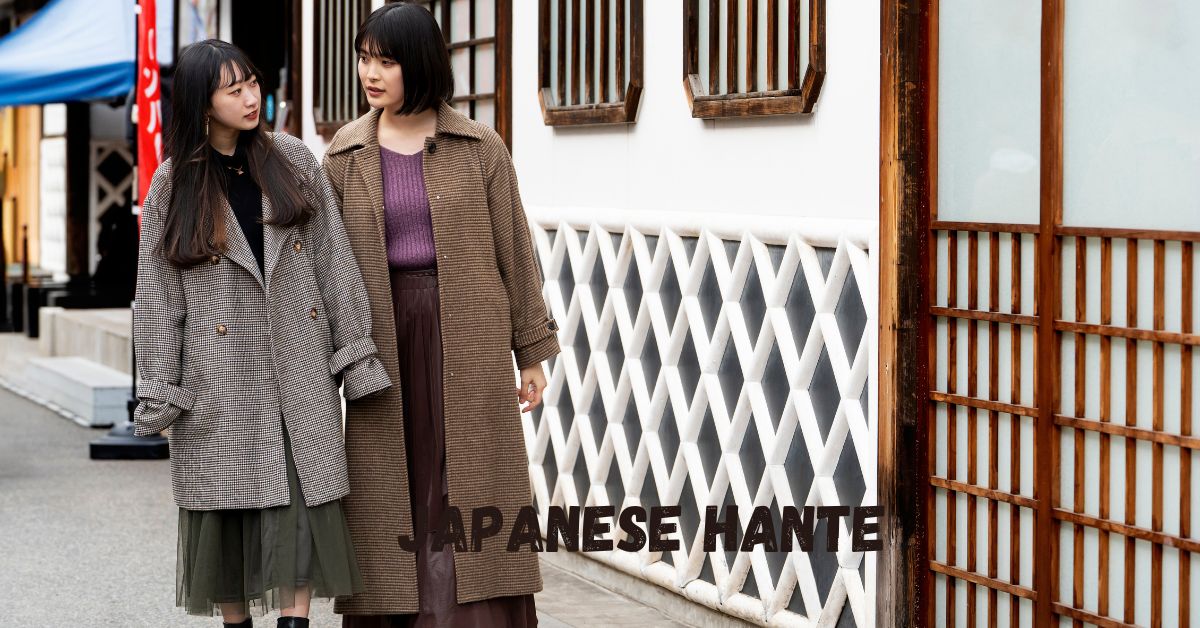A hanten is a traditional Japanese winter coat that has remained both fashionable and functional for centuries. Originating in the 18th century, this jacket is known for its simple yet effective design, providing warmth, comfort, and breathability. Whether worn at home, during festivals, or even as a night garment, the hanten offers versatility and style. This article delves into the rich history, craftsmanship, and modern-day relevance of the hanten, with a focus on its unique connection to the Kurume Kasuri textile tradition.
The History and Origins of the Japanese Hanten
The hanten has deep roots in Japanese culture, first gaining popularity in the southern Kyushu region during the 18th century. Originally worn by commoners and laborers, it quickly became a staple garment due to its practicality and comfort. Unlike many traditional Japanese garments reserved for specific classes, the hanten was worn by people from all walks of life for various purposes, including keeping warm at night or attending festivals.
While its primary function was to provide warmth, the hanten’s design also allowed for ease of movement, making it an ideal choice for daily activities. Today, hanten jackets continue to be popular in Japan, known for their versatility and ability to pair with different outfits, ranging from casual to traditional wear.
Craftsmanship: The Making of a Hanten
The creation of a hanten jacket involves intricate craftsmanship, with as many as 30 steps required to complete each one. These steps include designing patterns, weaving the fabric, binding, and dyeing the cotton cloth. One of the most critical components of the process is the use of Kurume Kasuri, a traditional woven cotton fabric dyed with indigo, produced in Kurume City, Fukuoka.Kurume Kasuri cotton is renowned for its durability and unique, abstract patterns, which are woven into the fabric using a labor-intensive process. First introduced by Den Inoue, a master in the textile industry, this technique involves binding sections of thread before dyeing, resulting in intricate designs that give the hanten its distinctive look.
Since 1957, the Japanese government has recognized Kurume Kasuri as an important intangible cultural property, a testament to its significance in Japanese textile history. The best hanten jackets are still handmade, preserving these time-honored techniques.
The Importance of Kurume Kasuri in Hanten Production
Kurume Kasuri fabric is the heart of hanten production, and its use has become synonymous with the creation of these traditional jackets. The exterior and lining of hanten jackets are typically made from 100% Kurume Kasuri cotton, while the padding inside is either pure cotton or a cotton-polyester blend, providing warmth and insulation without adding bulk.
Kurume Kasuri is a woven cotton fabric, traditionally dyed with indigo, and is known for its durability and long-lasting quality. The dyeing process results in a rich blue or black color that remains vibrant even after many washes. The patterns created through the weaving process are often geometric or abstract, giving each hanten a unique appearance.
The Versatility of the Hanten
One of the reasons for the hanten’s enduring appeal is its versatility. Hanten jackets can be worn by anyone, regardless of age or gender, making them a truly inclusive garment. Their simple design allows them to be worn over pajamas at home during cold winter nights or layered over modern clothing for outdoor activities.
The hanten’s minimalist design also makes it easy to pair with modern outfits. It can be styled with turtlenecks, long skirts, skinny jeans, or trousers, creating a chic yet functional look. Whether dressing for a casual day out or staying warm at home, the hanten is a flexible garment that offers both comfort and style.
Caring for and Storing a Hanten
Hanten jackets are easy to care for, making them a practical addition to any wardrobe. They can be washed in cold water and should be hung to dry, though it’s important to avoid direct sunlight to prevent the fabric’s indigo color from fading. Proper storage can also extend the life of a hanten. Storing the jacket on a hanger or in a vacuum-sealed storage bag will protect it from dust and moisture, ensuring it stays in good condition for years to come.
Because of their durable construction, hanten jackets can last for many seasons, making them a sustainable clothing option. With the proper care, a hanten can remain as stylish and functional as the day it was made.
The Modern Appeal of the Hanten
Despite its centuries-old origins, the hanten remains a popular choice in modern fashion. Its ability to combine traditional craftsmanship with contemporary trends has kept it relevant, both in Japan and abroad. The jacket’s lightweight yet warm construction makes it an excellent alternative to bulkier winter coats, while its classic design complements a wide range of styles.
For those interested in slow fashion and sustainable clothing, the hanten is an ideal choice. Made from natural fibers and using hand-crafted techniques, each hanten jacket is a unique piece of wearable art that reflects the rich history of Japanese textile production. As consumers increasingly prioritize environmentally conscious choices, the hanten’s combination of tradition, quality, and sustainability continues to resonate.
Conclusion
The Japanese hanten is more than just a coat—it is a symbol of Japan’s rich cultural heritage and craftsmanship. Made with care and attention to detail, using the traditional Kurume Kasuri textile technique, the hanten is a practical and stylish garment that offers warmth and comfort. Whether worn at home or styled for outdoor occasions, this versatile jacket continues to provide both functionality and fashion, making it a timeless addition to any wardrobe.
FAQs
What is a hanten made of?
Hanten jackets are made from Kurume Kasuri cotton for the exterior and lining, with padding made from 100% cotton or a cotton-polyester blend for added warmth.
Where did the hanten originate?
The hanten originated in the southern Kyushu region of Japan in the 18th century.
How is a hanten cared for?
Hanten jackets should be washed in cold water, hung to dry, and stored away from direct sunlight to preserve their color and quality.
Can a hanten be worn with modern clothing?
Yes, hantens can be paired with modern outfits such as turtlenecks, jeans, skirts, and trousers, making them a stylish addition to any wardrobe.
What makes Kurume Kasuri special?
Kurume Kasuri is a traditional woven cotton fabric, dyed with indigo, known for its durability, intricate patterns, and cultural significance in Japan.

